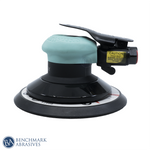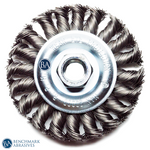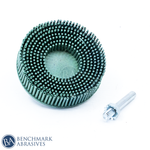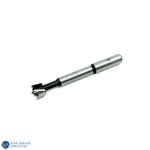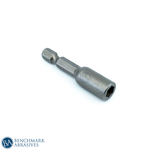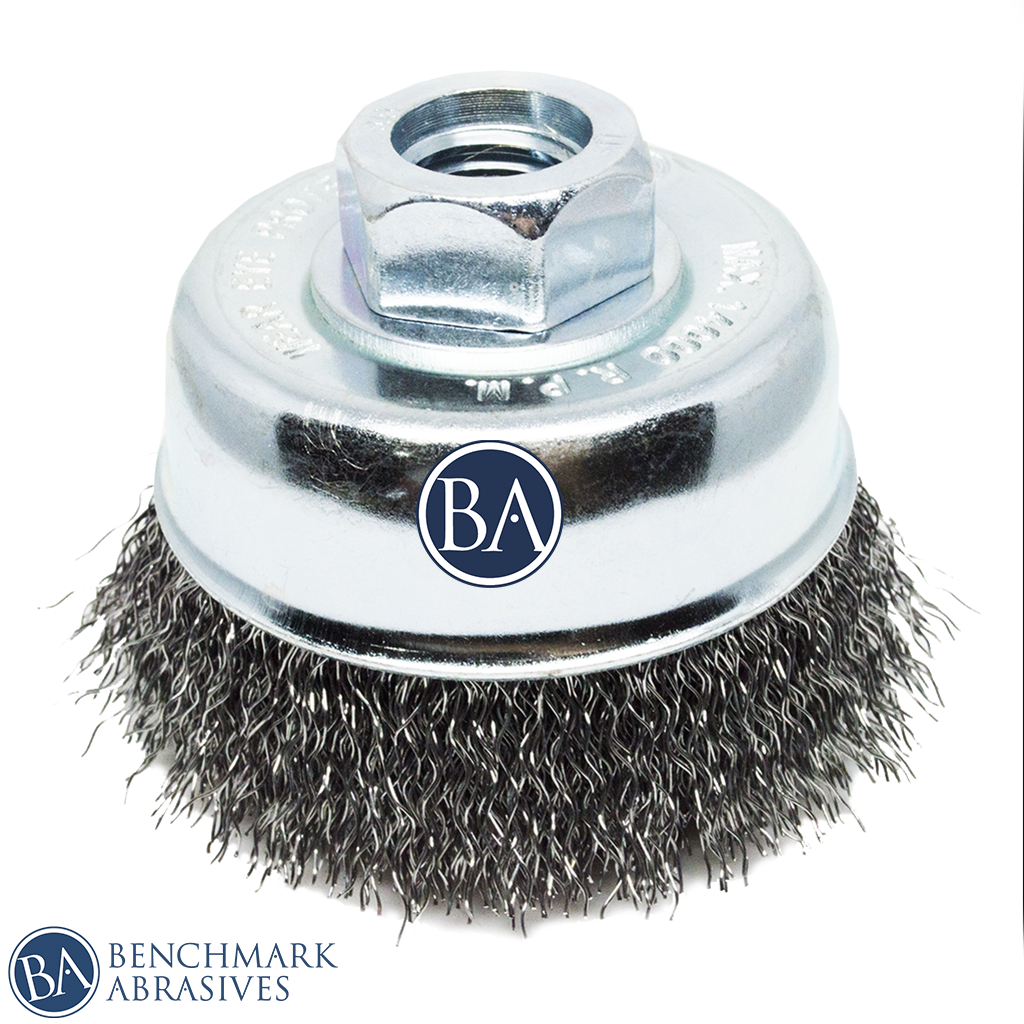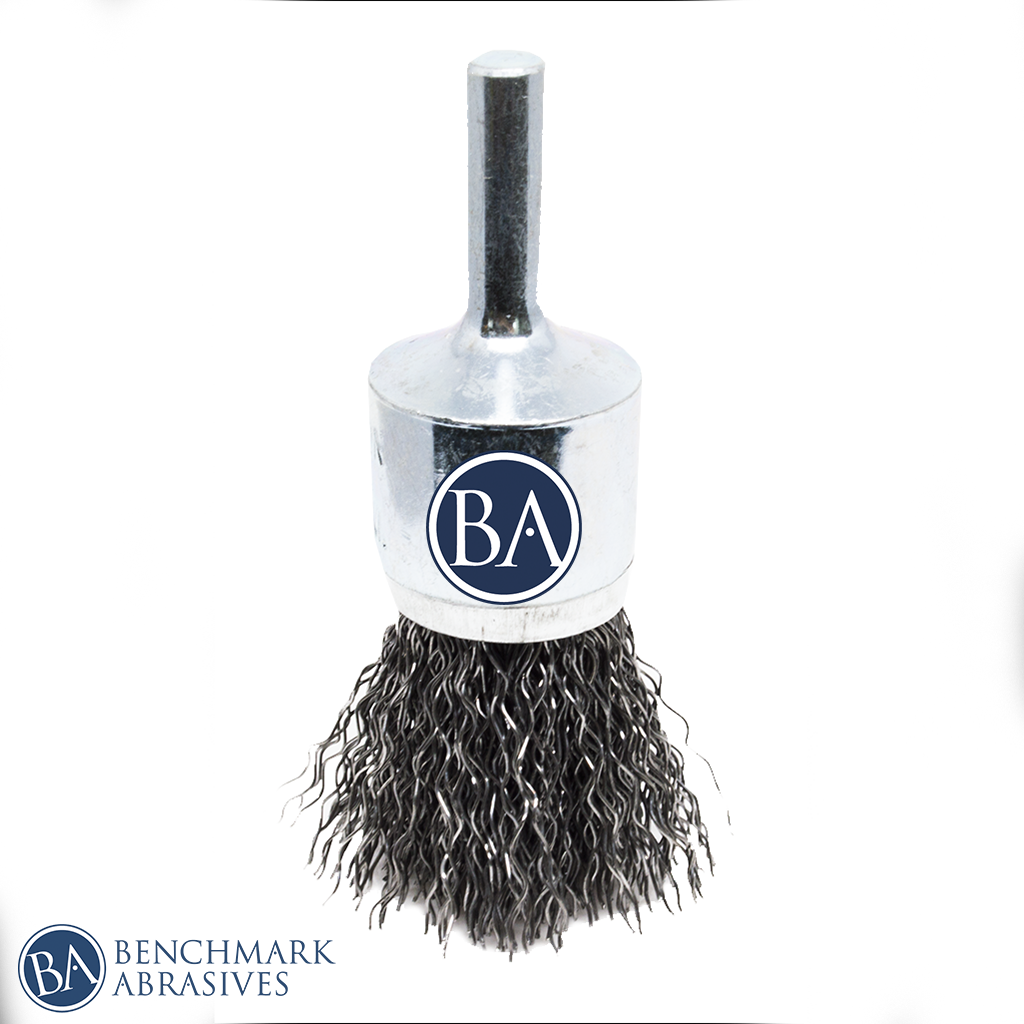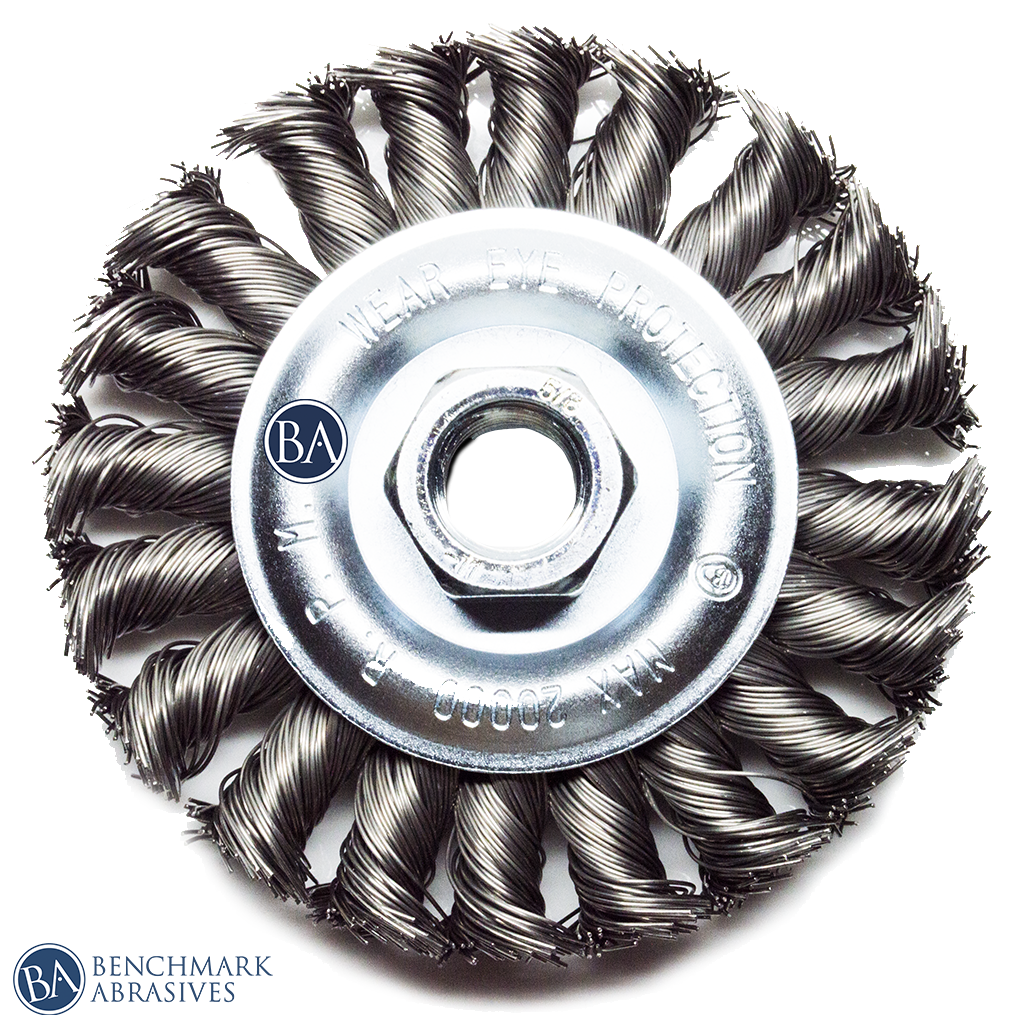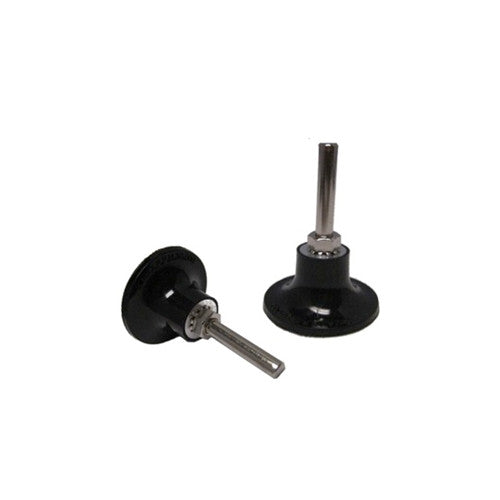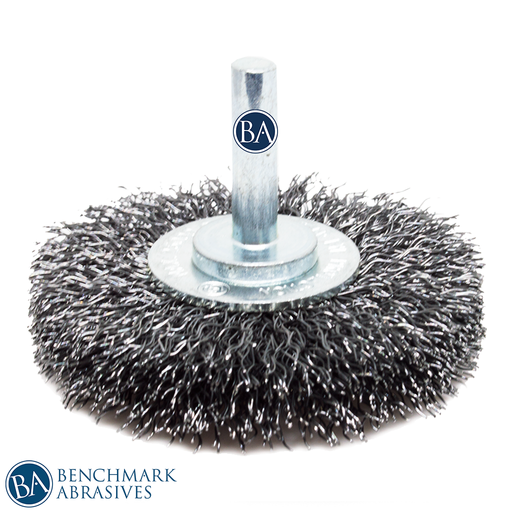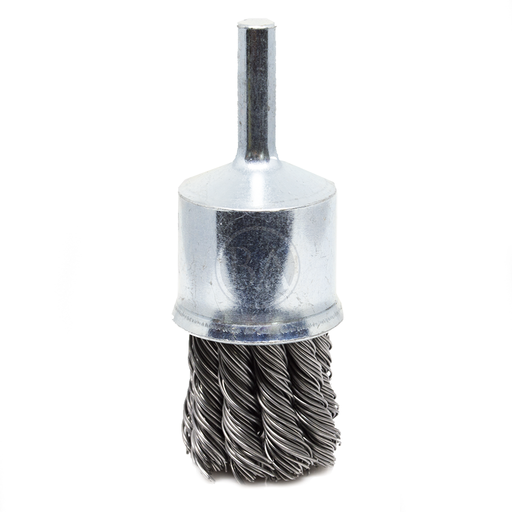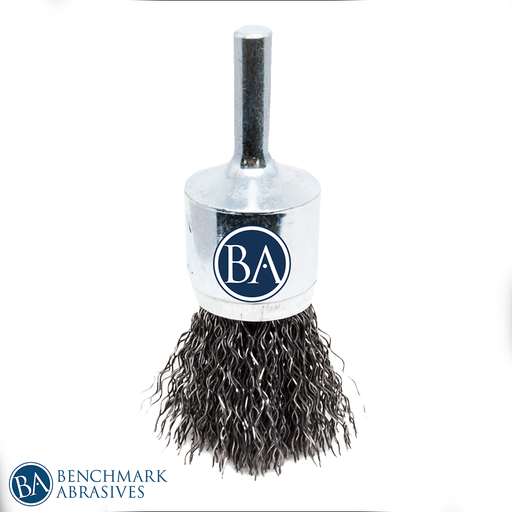Power Brushes
Industrial specialists use power brushes for contamination removal, polishing, and edge blending. The amount of horsepower required to run these instruments is largely determined by the amount of pressure required for the application. Power brushes are available in various sizes, shapes, and filament fabrications. Experts advise considering the surface and circumstances when choosing a power brush. They advise taking filament length and density into mind as well.
Power Brushing: What is it?
The metal finishing procedure known as power brushing removes burrs, sharp edges, fins, paint, oxidation, scale, and small weld flaws from the manufactured component using a variety of high-speed revolving wire power brushes. Brush fundamental components are fiber wheels, wire bristles, and Tampico. The type of material used for the workpiece affects brush choice.
How do Power Brushes Work?
Power brushes are made of small diameter wire bits tightly bound together to clean different workpieces. Each brush wire serves as a cutting tool while in use. The workpiece composition influences the choice of wire products. The power brush's speed, composition, and positioning all affect how the workpiece's surface is finished. The operator can use machinery or physical labor to apply these brushes, depending on the situation.
Brushes for different purposes
Power brushes come in various configurations, including tube, wheel, end, cup, pilot, and encased. Below are some different power brushes and their use:
- Tube Brushes - In general, tube brushes work well for cleaning cylinders and bores. Tube brushes are used to clean hydraulic castings and non-ferrous and ferrous metals. Double spiral tube brushes are appropriate for heavy-duty cleaning applications like power tools, whereas single spiral brushes are excellent for manual operation. Tube brushes are made of nylon, carbon, and stainless steel.
- Wheel Brushes - Wheel brushes are used for mixing, cleaning, and polishing. These are created from crimped brass, stainless steel, and carbon steel wires. The type of operation and the workpiece material influence the wire choice. A knot wheel cleans the scale, abrasive particles, and weld faults.
- End Brushes - Use end brushes for precise applications. These brushes are appropriate for cleaning hard-to-reach places. It gives the workpiece or tool a nice finish and removes burrs. End brushes come in crimp and knot designs.
- Cup Brushes - Cup brushes are appropriate for tough jobs and deep cleaning of huge surfaces. The brush's rotating action and contact with the surface allow comprehensive surface treatment.
Different Power Brushing Filament Materials
Carbon Steel Wire
Carbon steel wire is the most commonly used wire filament. It is durable and great for heavy-duty cleaning applications. Benchmark uses heat treated, high-tensile steel wires to provide one of the highest quality power brushes on the market.
Stainless steel Wire
We only recommend using the stainless products when brushing corrosion resistant (stainless steel) or non-ferrous metals (aluminum).
Nylon Wire
Nylon is the most durable synthetic wire material used in power brushes. Its flexibility, high fatigue strength and resistance to abrasion, heat and acids allow them to be used in a variety of applications.
Types of Power Brushes you can find at Benchmark Abrasives
Cup Brushes
Wire cup brushes are cup-shaped tools made from steel or stainless steel filaments. Machine part manufacturers use them for surface preparation, deburring, and surface finishing. Their primary applications include removing rust, paint and welding scale, metal cleaning, and edge blending.
- Filaments Available: Carbon Steel and Stainless Steel
- Outer Diameters: 2-3/4”, 3”, 4” and 6”
- Wire Style: Crimped and Twist Knot
- Wire Gauges: 0.012” and 0.020”
- Available Arbors: 5/8”-11
Tool Compatibility: Angle Grinder
End Brushes
End Brushes, also known as stem brushes, are usually employed in constrained spaces. They are suitable for deburring holes, polishing molds, cleaning castings, removing flash, spot facing, and getting a metal surface ready for welding. With a smaller container for their filaments that can range in cup diameter from less than an inch to four inches, end brushes sometimes resemble cup brushes in appearance.
End brushes' filament design, which might be crimped, twisted, flared, or have a hollow center, is a crucial component. Standard steel, stainless steel, brass, and bronze filaments are used.
- Filaments Available: Carbon Steel and Stainless Steel
- Outer Diameters: 3/4” and 1”
- Wire Style: Crimped and Twist Knot
- Wire Gauges: 0.014” and 0.020”
- Available Arbors: ¼”
Tool Compatibility: Die Grinders, Electrically Powered Rotary Drills and Impact Drivers
Steel Wire Wheels
The variety of wire brushes is unlimited since various varieties, as well as unique brushes and strange patterns, are always being developed for specialized uses. Wire brushes play an important role in household, industrial, manufacturing, and process production, so it is necessary to understand their use and requirements.
Benchmark Abrasives offers a top quality professional line of steel wire wheels.
These are no DIY quality products and will stand up to the best wire brushes on the market! Head over to our Steel wire Wheel Category for more info on the following styles:
- Standard Twist Knot Wire Wheels
- Stringer Bead Wire Wheels
- Shaft Mounted Wire Wheels
- Bench Grinder Wire Wheels
Tool Compatibility: Angle Grinder, Die Grinders, Bench Grinders, Electrically Powered Rotary Drills and Impact Drivers
Handheld Wire Brushes
Handheld Wire Brushes are brushes with a handle or hand grip, which are used to rub the substrate, and are called hand-held brushes. They have bristles mounted on wood, plastic, metal handle, stem-like scratch, welders, twisted-in-wire, and plater brushes.
Hand brushes are moved manually against a surface to rub, strip, clean, descale, apply paint, polish, remove dirt, or supply other specialized actions.
- Wire Filament Options: Brass, Carbon Steel and Stainless Steel
- Styles: Toothbrush, Shoe Handle and Curved Handle
- Wire Gauges: 0.012”
Tool Compatibility: Hand use Only
Nylon Power Brushes
A nylon brush is made of nylon polymer filaments impregnated with abrasive grains, which are incredibly resilient, robust, flexible, and elastic. Nylon filaments are popular for making brushes because they are strong and abrasion resistant. Nylon wire brushes are strong and durable because of their resistance to chemicals and their capacity to handle extremely high temperatures (up to 350° F).
The word "nylon" is a collective noun for synthetic polymers, also referred to as polyamide-nylon, an organic thermoplastic. Since the DuPont company first introduced nylon in 1938, its use as a flexible synthetic fabric with several applications has risen quickly.
Benchmark Abrasives offer a wide range of different nylon wire products to match your job:
- Brush types: End Brushes, Shaft Mounted Wire Wheels, Flap Wheel, Cup brushes for angle grinders and Shaft Mounted Cups
- Inner Diameter Options: 1/4" hex shank, 1/4” round and 5/8”-11 (for angle grinders).
- Material – Nylon impregnated with abrasives grains
Grits Offered: 80 grit (gray), 120 grit (orange) and 240 grit (blue)
Tool Compatibility: Angle Grinder, Die Grinders, Electrically Powered Rotary Drills and Impact Drivers












